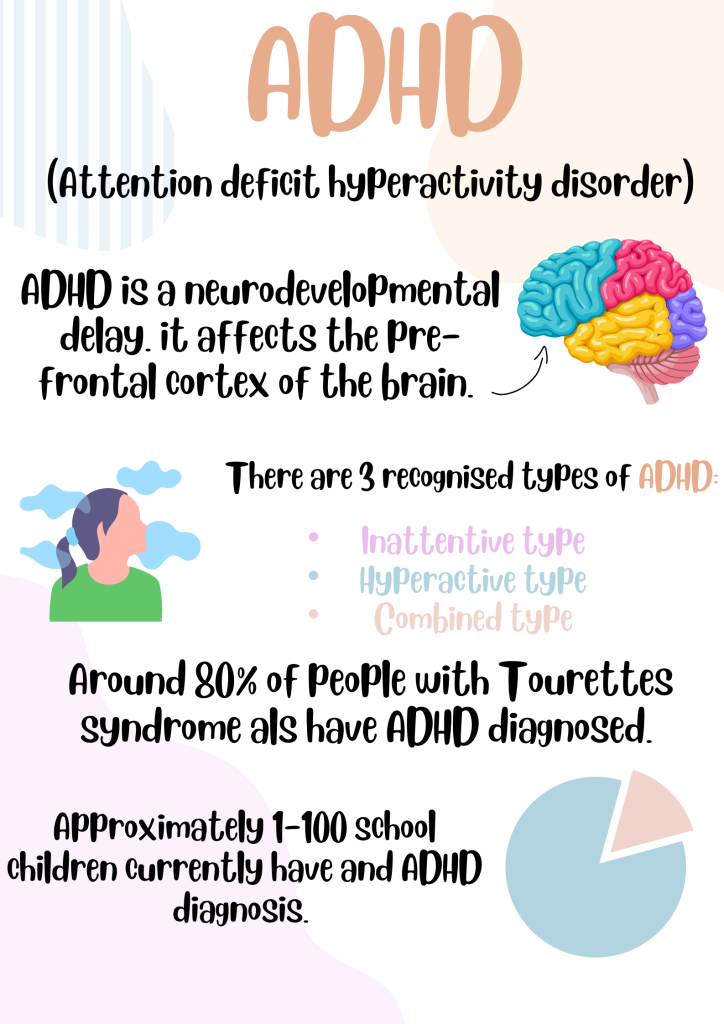
Attention Deficit Hyperactivity Disorder (ADHD) is a neurodevelopmental disorder characterized by difficulties in sustaining attention, hyperactivity, and impulsive behavior. Traditionally viewed through a lens of deficits and challenges, recent research suggests a nuanced relationship between ADHD and creativity. While ADHD poses significant challenges in various aspects of life, it can also provide a unique lens through which individuals perceive the world, leading to heightened creativity and artistic expression. In this article, we delve into the connection between ADHD and creativity, exploring how individuals with ADHD can harness their creative potential through artistic endeavors.
Knowledge about ADHD and Creativity:
ADHD is often associated with difficulties in concentration, organization, and time management. However, individuals with ADHD frequently exhibit traits such as hyperfocus, spontaneity, and divergent thinking—traits that are closely linked to creativity. Hyperfocus, for instance, refers to the ability to intensely concentrate on a task of interest for an extended period, often leading to remarkable productivity and creativity. While this intense focus can be challenging to regulate, it can also serve as a catalyst for creative exploration.
Moreover, individuals with ADHD tend to have a heightened sensitivity to stimuli in their environment. This hypersensitivity can result in a more profound emotional experience and a richer perception of the world, which can fuel creative expression. Additionally, the impulsivity inherent in ADHD can lead to spontaneous and uninhibited artistic endeavors, bypassing the usual constraints of self-criticism and overthinking.
The Role of Artistic Expression:
Artistic expression provides a powerful outlet for individuals with ADHD to channel their thoughts, emotions, and energy constructively. Whether through visual arts, music, writing, or performance, creative activities offer a means of self-expression that transcends the limitations imposed by ADHD. Engaging in artistic pursuits allows individuals with ADHD to explore their inner world, communicate their experiences, and find a sense of purpose and fulfillment.
Visual arts, such as painting, drawing, and sculpture, enable individuals with ADHD to externalize their thoughts and emotions in a tangible form. The process of creating art can be meditative and calming, providing a respite from the constant stream of thoughts and impulses characteristic of ADHD. Moreover, art allows for experimentation and exploration, encouraging individuals to embrace spontaneity and embrace mistakes as part of the creative process.
Music, with its rhythm, melody, and harmony, offers another avenue for creative expression for individuals with ADHD. Playing an instrument or composing music provides an outlet for emotional expression and self-regulation. Music can also serve as a form of therapy, helping individuals with ADHD manage stress, anxiety, and mood fluctuations.
Writing, whether in the form of poetry, fiction, or journaling, allows individuals with ADHD to organize their thoughts and make sense of their experiences. The act of writing can be both cathartic and empowering, enabling individuals to express themselves freely without fear of judgment or criticism. Additionally, writing provides a means of connecting with others, sharing stories, and fostering empathy and understanding.
Performance arts, including acting, dancing, and improvisation, capitalize on the spontaneity and energy inherent in ADHD. These forms of expression allow individuals to embody different personas, explore new roles, and step outside of their comfort zones. Performance arts also promote social interaction and collaboration, fostering a sense of community and belonging.
Nurturing Creativity in Individuals with ADHD:
While ADHD can present significant challenges in everyday life, it is essential to recognize and nurture the creative potential of individuals with ADHD. Providing opportunities for artistic expression and creative exploration can empower individuals to embrace their strengths and talents. Here are some strategies for fostering creativity in individuals with ADHD:
Encourage Experimentation:
Create a supportive environment that encourages individuals with ADHD to explore different artistic mediums and techniques without fear of failure or judgment. Emphasize the process of creating rather than the final product, allowing for experimentation and discovery.
Provide Structure and Support:
While creativity thrives on spontaneity, individuals with ADHD may benefit from some degree of structure and guidance. Offer support in setting realistic goals, managing time effectively, and staying organized while allowing for flexibility and creative freedom.
Celebrate Diversity:
Recognize that creativity takes many forms and can manifest in various ways. Celebrate the unique talents and perspectives of individuals with ADHD, and encourage them to embrace their creativity as a source of strength and resilience.
Promote Self-Expression:
Create opportunities for individuals with ADHD to express themselves authentically through art, music, writing, or performance. Encourage them to share their work with others and celebrate their achievements, however small they may seem.
Provide Positive Feedback:
Offer constructive feedback and encouragement to individuals with ADHD, focusing on their strengths and accomplishments rather than dwelling on shortcomings. Positive reinforcement can boost self-esteem and motivate continued creative exploration.
In summary:
ADHD and creativity are intertwined in complex and intriguing ways. While ADHD poses challenges in various aspects of life, it also provides a fertile ground for creative expression and innovation. By embracing their unique perspectives and talents, individuals with ADHD can unlock their creative potential and make meaningful contributions to the world through artistic endeavors. creativity.


